How to Play: Darkin Death
I’m Jordan “WhatAmI” Abronson and I have to admit there is a certain guilty pleasure I take in making nerfed cards perform at a high level.
I get to channel my inner captain America and let Riot know I can do this all day, just keep the punches coming. And hey, sometimes it even works.
We just had what might actually be the best set of hotfixes we’ve ever gotten. The nerfs to the top decks have blown the meta wide open to allow in a ridiculous diversity of powerful archetypes.
So, what do I do? That’s right, re-tool one of the old top dogs and stubbornly refuse to stop slamming my head into this brick wall.

Deck Code: CECACBQHAQAQMBIHAICAKAYFAIAQKKBRAUDACBIBDEUSWMBVAEDAKIABAYFB2AIEAUCACBQABMBACAIFBMAQMDA2
[See Darkin Death deck details]
Aggression as Control
One of the most interesting things about Legends of Runeterra as opposed to other card games is how focused it is on the board. Almost all decks, in one way or another, have to directly interact with their own and the other player’s cards that are actively in play to win the game.
What this means is that forcing your opponent to respond to the damage coming their way is just an effective way of shutting down early and mid-game threats as spamming removal spells. After all, what are they going to do, sit there and let you kill them? No, especially when you are an atrocity deck. The trades become a forced affair.
This type of strategy is difficult to pull off because committing to sufficient aggression to make it viable will often leave you without the tools to well utilize the time your aggression has brought you. In this deck, however, Aatrox and his Darkin create the perfect storm.
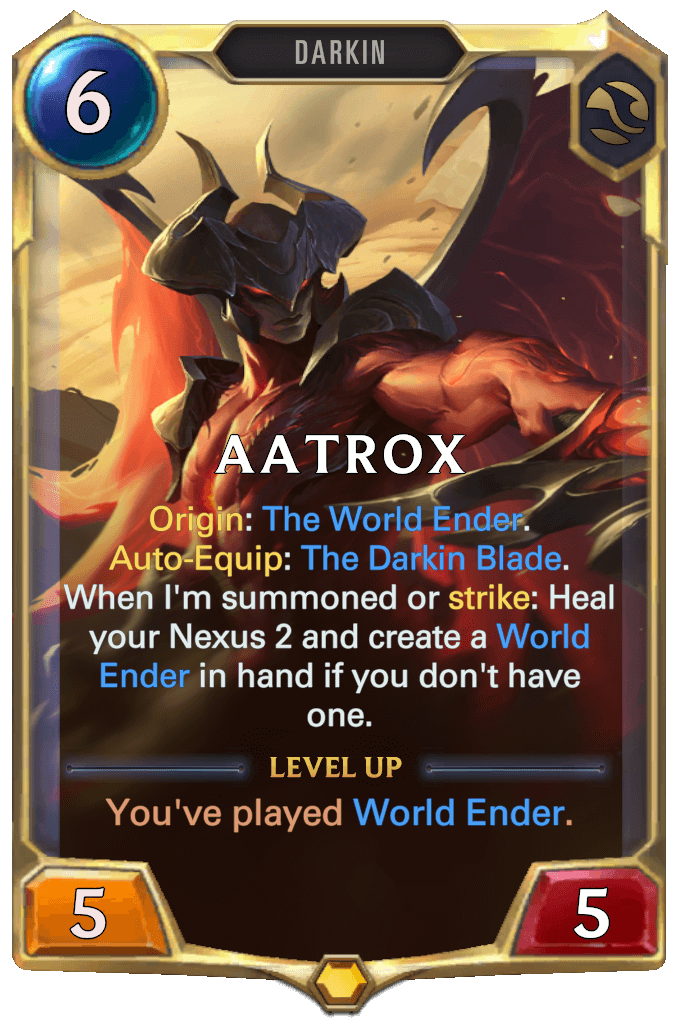
The incentivization of small spammy units to hold the weapons combines perfectly with the late-game staying power that the ending of the world brings. Kindred, of course, thrives in an environment where units are forced to die, and Elise keeps it all flowing smoothly. Let’s break down how we get there.
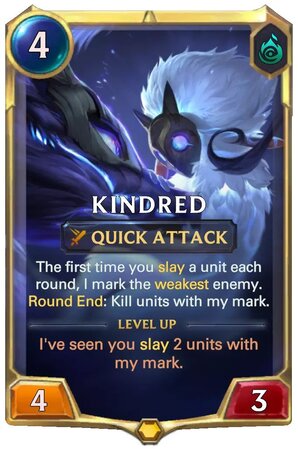
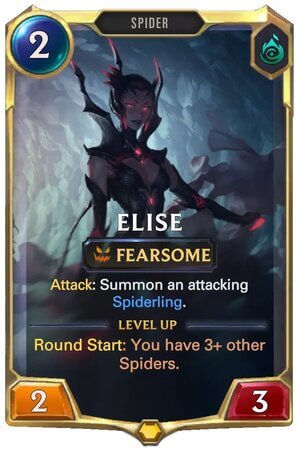
Phase One: No, I’m the Aggro Deck
Starting from our mulligan we want to be trying to put as much pressure on our opponent as possible. The more they are forced to respond to our game plan, the less agency they will have to attempt to develop their own. This means we want our early units and a couple of equipment to beef them up on the way in.
This is not a deck where we need to worry about keeping any of our later-game threats. Our weapons will eventually turn into the Darkin they represent and Aatrox himself will jump headlong out of the deck as soon as we meet the necessary requirements.
What that means though, is that unless you have a very specific plan for them, your removal spells are generally not what you are looking for. Send them back and do your level best to create a situation in which you wouldn’t need to use them anyway.
This deck takes “The best defense is a good offense,” to the extreme. Yes, we are a deck that is perfectly happy, and in fact, planning, to go into the late game. Yes, many of our units simply cannot block. No, that doesn’t matter much as long as we can force our opponent to do the blocking for us.
Phase Two: Cleaning Up the Board
The way we are talking about playing out these games is going to leave some inherently quite messy board states. Random units lying about everywhere running by to attack nexuses in every direction, it’s downright untidy.
As you approach the turn where you’ll be looking to end the world it becomes time to clean things up a bit. This is the phase of the game in which Kindred really shines. An unanswered Kindred can sometimes simply win the game all on her own. If Wolf and Lamb stick around for more than a turn or two your opponent can kiss any hopes they had of a reasonable board state goodbye.
This is also where we may end up hard-casting a Darkin or two. Joraal is a surprisingly solid removal spell when he comes down at five mana. Only one mana higher the oft-forgotten Xolani is just exceedingly beefy. There aren’t many boards that can comfortably swing into a 7|7 on turn six.
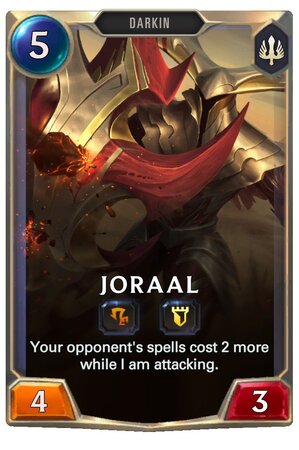
Phase Three: End of the World
So, what have we been buying all of this time for anyway? Well, he might take a touch longer to get there, but a flipped Aatrox will still end a game with alarming alacrity. Flooding the board with Darkins is just as powerful as it used to be, for all that it now comes down on turn eight to nine instead of seven to eight.
This version of Aatrox in particular has one absolutely brutal combo moment it gets to pull off that takes its particular Darkin endgame even a step beyond that of the other Aatrox Decks. We call this secret over-the-top power, “The Xolani Machine Gun.”
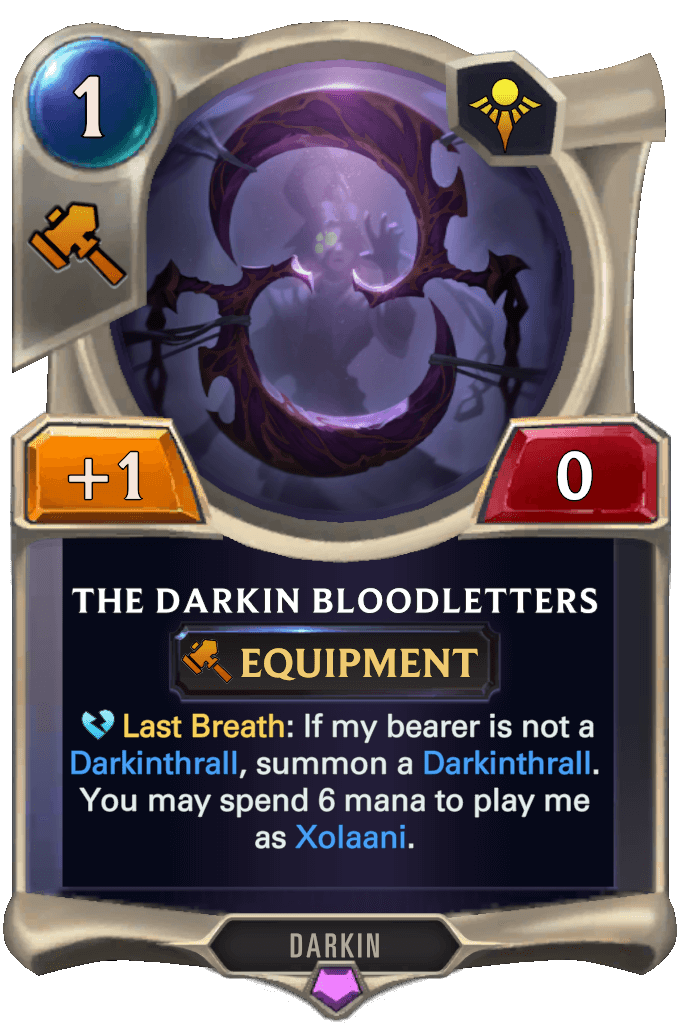
Step one, end the world with a unit equipped with a Darkin Bloodletter as well as one equipped with the Darkin Halberd. You now have a Taarosh and a Xolani who has a bloodletter of her own. Use any of your decks’ myriad kill effects to off your own Xolani. She will die and give you two sets of Bloodletters in hand.
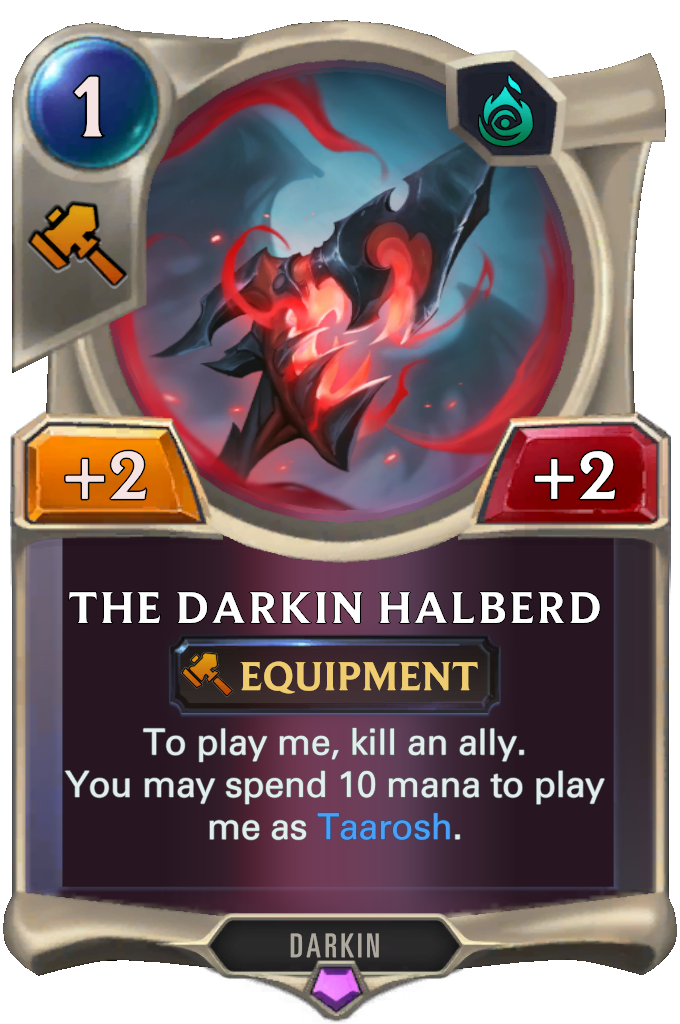
Now for one mana each time, since you have leveled Aatrox, you can play Xolani killing the other Xolani in play. Do this as many times as you have mana and/or patience. Then attack with Taarosh and glory in the board full of 7|7 overwhelms that pop up to brutally murder your poor opponent who so nicely sat through the final evolution of your Darkin Combo.
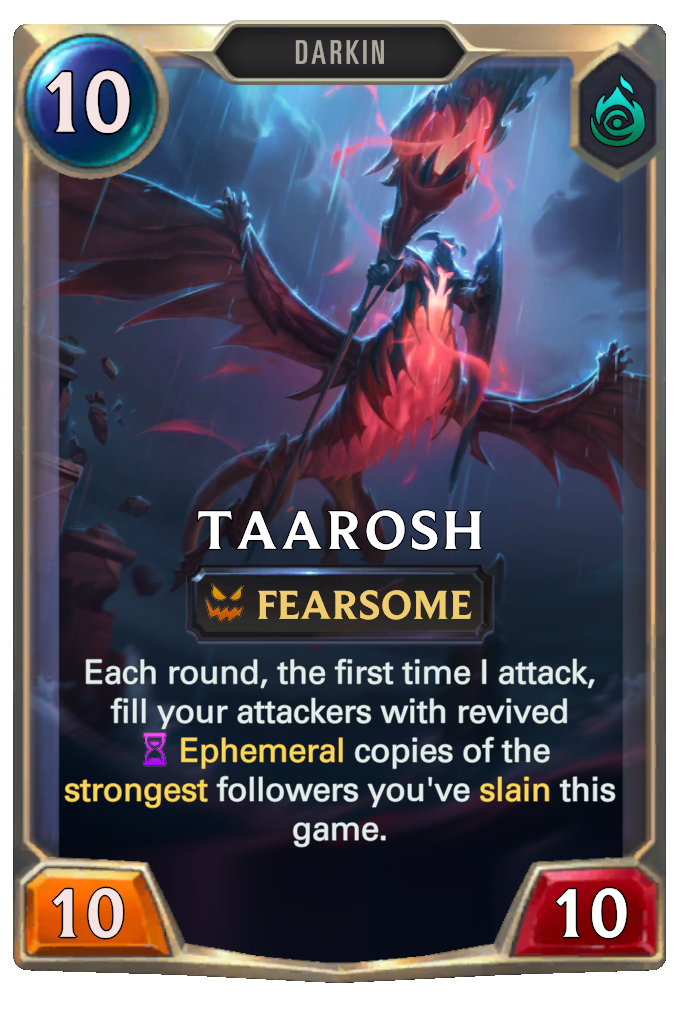
Is this a tad bit of Win-More when we are usually already going to be victorious upon resolving a World Ender? Yes. Is it fun as all get out and a great way to go over the top of other Aatrox decks? *Also* yes.
Good luck out there in this new glorious metagame, whether it be with new brews or restyles of the old powerful favorites. And until next time, may the Xolani Machine gun always be pointed away from you.
To explore more decks created by the community, head to our Deck Library.
Subscribe to our newsletter:
Don’t miss out on all of the latest LoR content!
 Download APP
Download APP